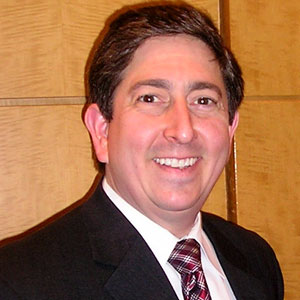States Have a Role in Creating Public Health Policies

The federal government structure in Washington, DC, is hard to ignore. U.S. children are taught about it in schools, and we hear about it regularly as elections, legislation, appointments, and the like are discussed in the news.
Less recognized, though, is that each state has a similar legislative structure. The governor is the highest elected officer, with constitutional powers that include budgetary authority, emergency resources, and even a state militia. State representatives meet in bicameral (two houses) chambers, a House and a Senate, and full agencies regulate in cabinet-level departments.
Within the boundaries of each state, based in a rich history of sovereign rights that have been dedicated to states for more than 240 years, are principles that allow the people to direct their leaders to govern as the people indicate. Hence, California passes laws that Alabama would not consider. The U.S. Constitution’s 10th amendment, often cited by states’ rights advocates, plainly affirms (https://www.loc.gov/rr/program/bib/ourdocs/Constitution.html), “The powers not delegated to the United States by the Constitution, nor prohibited by it to the states, are reserved to the states respectively, or to the people.”
When dealing with issues that affect all people, such as sweeping laws about the national defense, transportation, the interior, and health care, the federal government takes jurisdictional authority. And in more recent years, the U.S. Supreme Court has weighed in on civil rights cases, nationalizing laws for every citizen, regardless of state laws.
But it is at the state level that public policy shifts can occur. Although the U.S. Congress grabs all the headlines with its rancor and outrageous behavior, state legislatures often go unnoticed and accomplish a great deal of legislative efficiency. More and more, national advocacy groups are finding a successful tactic in taking complex, and sometimes controversial, topics to state legislatures. Viewed as incubators for future, broader legislation, states tackle social and economic issues in a more targeted environment. If it can work at the state level, perhaps the same law can work at the federal level? Three such topics have found their way through state legislatures with some success and are important to oncology nurses.
More and more, national advocacy groups are finding a successful tactic in taking complex, and sometimes controversial, topics to state legislatures.
Medicinal Cannabis
In January 2018, U.S. Attorney General Jeff Sessions announced a new federal policy (https://www.justice.gov/opa/pr/justice-department-issues-memo-marijuana-enforcement) regarding marijuana. The Department of Justice reasserted the federal government’s prohibition of marijuana (https://www.nytimes.com/2018/01/04/us/politics/marijuana-legalization-justice-department-prosecutions.html), overriding 29 states and the District of Columbia that have passed laws legalizing the use of marijuana, including medicinal cannabis (https://voice.ons.org/news-and-views/understanding-medicinal-cannabis-in-cancer-care). Until recently, it was thought that a single, federal law might be introduced to encompass the spreading support for medicinal cannabis. Next steps could be to expand the effort to more states, forcing Congress to review the subject.
Scope of Practice
Nurse licensure is handled through each state. It’s a complex regiment of 50 different bodies (http://www.nursingworld.org/MainMenuCategories/Policy-Advocacy/State/Legislative-Agenda-Reports/Scope-of-Practice) that generally have the same level of regulations but some very important and defining differences. Most notably, this includes codifying nurses’ scope of practice for each state: when, where, and how nurses are allowed to legally practice to the full extent of their education and experience is often up to state legislatures, with elected officials who have limited to no understanding of nurses’ abilities. Laws are passed with broad strokes and unknown implications. Nurses must be a vocal part of these discussions with their state legislators. Find out more about how you can get involved (http://www.ons.org/advocacy-policy/get-involved).
Workforce Safety
The day-to-day work environment for a nurse is constantly changing. Treatment and cures have advanced, but often those who administer the lifesaving drugs are themselves in harm’s way (https://www.ons.org/store/books/safe-handling-hazardous-drugs-third-edition), if the drugs are handled incorrectly. The safe disposal of hazardous drugs is an issue that oncology nurses regularly face. Unknown to those outside of this environment, the National Institute for Occupational Safety and Health is promoting standards at the federal level as well as in individual states. Some state laws about hazardous drug safety have been on the books for more than 25 years but are inconsistent between states (https://doi.org/10.1097/NAN.0b013e31826596c4). The more rigorously healthcare workers advocate for safety, the better state elected officials understand the underlying points of the issue.
How these topics are developed and the approach with which patient advocates and healthcare providers, particularly nurses, attempt to advance the dialogue are lessons for creating a motivated and mobilized army of supporters. Unique leadership opportunities exist to make real changes in health care, and oncology nurses are at the center of these discussions. Whether at the federal or state level, as the most trusted healthcare professionals, nurses continue to make a real difference with decision makers who implement policy.
